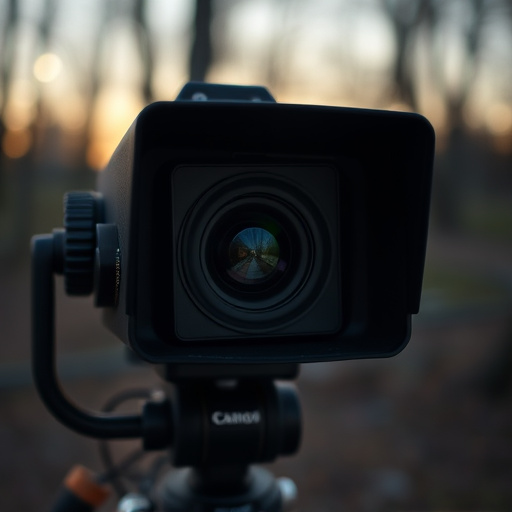Best hidden cameras for low light conditions offer advanced features like infrared tech, high resolution, wide angles, and motion detection, providing clear footage up to several meters away in dimly lit environments. Strategically position them using natural cover and angle lenses for unobvious surveillance. Essential technologies include night vision with IR LEDs and digital image enhancement for optimal performance in low light scenarios. Respect privacy by complying with local regulations and avoiding sensitive areas like bathrooms.
“Enhance your home security with our comprehensive guide to surveillance device sweeps. Discover the best hidden cameras designed for low light situations, ensuring optimal visibility even in dimly lit areas. Learn about strategic placement and discreet installation tips for maximum protection. We’ll also explore how to analyze footage for clarity and discuss legal considerations regarding privacy. Get ready to transform your residential property into a secure haven with our expert insights.”
- Best Hidden Cameras for Low Light Situations
- Choosing Secure Location for Surveillance Devices
- Discreet Installation Tips for Home Security
- Analyzing Footage: Maximizing Clarity in Darkness
- Legal Considerations: Privacy and Surveillance Etiquette
Best Hidden Cameras for Low Light Situations
When it comes to hidden cameras designed for low light situations, there are several top-rated options that offer advanced features and superior performance. These devices are meticulously engineered to capture clear footage even in dimly lit environments, ensuring your residential property remains secure around the clock.
The best hidden cameras for low light conditions often incorporate infrared (IR) technology, allowing them to see in complete darkness up to several meters away. Look for models with a high resolution (e.g., 1080p or higher), wide-angle lenses, and motion detection capabilities. Popular choices include discreet camera systems disguised as everyday items like light bulbs, power outlets, or even fake rocks, offering both functionality and unnoticeable surveillance.
Choosing Secure Location for Surveillance Devices
When setting up surveillance devices, choosing a secure location is paramount. For residential properties, consider installing cameras in areas that offer natural cover, such as behind bushes or trees, to maintain a low profile and reduce detection risks. Additionally, positioning them near windows or doors provides clear lines of sight while keeping them out of direct view.
The best hidden cameras designed for low light conditions are essential for effective surveillance in dark or dimly lit areas. These advanced devices often incorporate infrared technology and night vision capabilities to capture clear images even without visible light, ensuring around-the-clock monitoring.
Discreet Installation Tips for Home Security
When setting up a home security system with surveillance devices, discretion is key. For best results with hidden cameras in low light conditions, consider these installation tips. Position your cameras strategically, utilizing natural obstacles like trees or bushes to provide cover. Ensure the lenses are angled correctly to capture clear footage without being visibly obvious.
Use infrared technology for night vision to maintain quality surveillance even in dimly lit areas. Mount cameras high up on walls or ceilings to deter potential intruders from easily detecting them. Additionally, utilize best hidden cameras designed for discrete installation, ensuring they blend seamlessly into their surroundings, be it a ceiling corner or behind a picture frame.
Analyzing Footage: Maximizing Clarity in Darkness
When analyzing footage from hidden cameras, particularly in low light conditions, clarity becomes paramount. Many of the best hidden cameras designed for such environments employ advanced technologies to maximize visibility even in darkness. Night vision capabilities, often enhanced by infrared (IR) LEDs, allow these devices to capture detailed images and videos without relying on external lighting. IR illumination is crucial as it emits light that’s invisible to the human eye but can be detected by camera sensors, ensuring your property remains secure around the clock.
Additionally, digital image enhancement features further improve low-light performance. These algorithms can reduce noise, sharpen details, and boost overall contrast, transforming murky images into recognizable scenes. Such enhancements are especially useful when reviewing footage captured through window or door cameras, where light is often limited but crucial for identifying individuals or activities. By leveraging these technological advancements, homeowners can ensure that even the best hidden cameras in low light conditions deliver clear, actionable insights to maintain a safe and secure residential environment.
Legal Considerations: Privacy and Surveillance Etiquette
When setting up a surveillance device sweep on a residential property, it’s crucial to navigate the delicate balance between security and privacy. In many jurisdictions, there are strict laws governing the use of surveillance technology, especially in private residences. The installation and operation of hidden cameras, particularly in low-light conditions, require a deep understanding of these legal considerations.
Privacy etiquette dictates that any surveillance system should be used responsibly and ethically, ensuring minimal intrusion into individuals’ personal spaces. It’s essential to comply with local regulations regarding consent, notice, and the purpose for surveillance. Using best hidden cameras designed for low light conditions can help maintain secrecy while capturing clear footage. Always remember to direct the devices away from areas where privacy is expected, such as bathrooms and bedrooms, to respect the privacy rights of residents and visitors alike.
When equipped with the right tools, such as top-tier hidden cameras designed for low light situations, responsible homeowners can enhance their property’s security. By strategically selecting secure locations and implementing discreet installation techniques, you can create an effective surveillance system. Remember to analyze footage carefully to ensure clarity in darkness and always stay within legal boundaries, respecting privacy and local surveillance etiquette. Utilizing these measures will contribute to a safer home environment without compromising your peace of mind.
